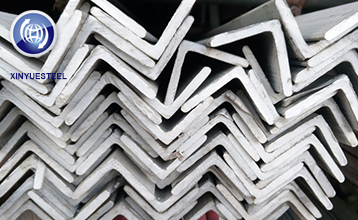Shanghai nickel futures prices plummeted in early March
Mar. 19, 2021
Since March, the price of Shanghai nickel futures has continued the sharp decline in the last few days of February, and further fell sharply. The magnitude and speed of the futures have caught market participants by surprise, and many businessmen have been alarmed. Within two weeks, the Shanghai nickel futures price dropped by about RMB 20,000/ton, with the highest drop of more than 15%.
Monitoring data shows that on the last trading day of February 2021 (Friday, February 26), the closing price, highest price and lowest price of the main Shanghai nickel futures contract are 140490 yuan/ton, 145510 yuan/ton and 139310 yuan/ton respectively. Tons, to the last trading day of the second week of March (Friday, March 12), the closing price, highest price and lowest price corresponding to the Shanghai nickel main contract dropped to 120950 yuan/ton, 123440 yuan/ton and 120390 respectively. Yuan/ton, the decline was as high as 19,540 Yuan/ton (13.91%), 22,070 Yuan/ton (15.17%) and 18,920 Yuan/ton (13.58%). As of 1 a.m. on March 13, the latest price of Shanghai nickel’s main contract was 119,950 yuan/ton, a further 1,000 yuan/ton (down 0.83%) drop from the previous closing price, and a 1840 yuan/ton drop from the settlement price of the previous trading day. Tons (down 1.51%). At the same time, the highest price fell to 122,150 yuan/ton (down 1,290 yuan/ton, down 1.05%), and the lowest price fell to 119,900 yuan/ton (down 490 yuan/ton, down 0.41%).
The sharp decline in the market has far exceeded the sharp rise in the market after the Spring Festival. The price advantage accumulated in more than two months has disappeared, and there is a lot of desolation of "returning to the pre-liberation overnight".

As of 3 pm on March 15 (Monday), the closing price, highest price and lowest price of Shanghai nickel’s main contract were RMB 12,1990/ton, RMB 122,190/ton, and RMB 118,750/ton, respectively, compared with those of the previous trading day. The price increased by RMB 1,040/ton (up 0.86%), decreased by RMB 1,250/ton (down 1.01%), and decreased by RMB 1,640/ton (down 1.36%). The closing price increased by RMB 200/ton (up 0.16%) from the settlement price of the previous trading day. Obviously, although the market is trending upwards, it still cannot conceal the fact that prices continue to fall.
In the spot market, nickel prices continued to generally fall, traders maintained their shipment status, and downstream orders were received on demand; premiums were generally stable, trading atmosphere improved, and transaction volume increased slightly. Relevant statistics show that on March 12, the average price of No. 1 nickel on the Yangtze River Nonferrous Network was 122,750 yuan/ton, down 500 yuan/ton; the average price of No. 1 nickel in Huatong spot was 122850 yuan/ton, down 200 yuan/ton; Guangdong spot nickel The average price was RMB 125,000/ton, down by RMB 1,500/ton; the ex-factory price of Jinchuan Nickel was RMB 125,200/ton, down by RMB 1,500/ton from the previous trading day. In general, spot nickel prices in the domestic market range from RMB 121,000/ton to RMB 125,200/ton. It is understood that the contradiction of the structural supply shortage of nickel has now been smoothed out. From the perspective of the primary nickel supply and demand balance sheet, the overall supply of nickel in 2021 will have a slight surplus of 46,900 tons.
The recent stainless steel futures prices continue to be weak
In February, the stainless steel futures market rose too fast; in March, the stainless steel market fell more sharply. As the "pioneer" of the operation of stainless steel prices, the sharp rise and fall of Shanghai nickel futures prices have largely affected the evolution of the stainless steel futures market. From March 9th to March 10th, the price of Shanghai nickel futures bottomed out (the closing price, the "bottom" price of the highest price and the lowest price were 118,600 yuan/ton, 121,640 yuan/ton and 118,000 yuan/ton respectively), but Two days later, the price turned down. It remains to be seen whether we will explore deeper "bottom" prices again.
At present, the domestic macro economy is growing steadily on the whole, and the downstream consumption of stainless steel is increasingly recovering. At the same time, the cost of spot stainless steel is still at a high level, and its price will inevitably be strongly supported, and the market will gradually return to stability.



